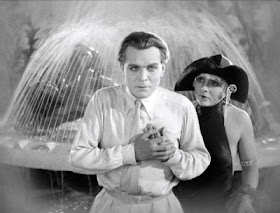July 1 12AM--Midnight (year: 1924) Trailer
The next three titles comprise the primetime Out Of This World focus. July 2 starting @ 8PM
July 2 8PM (year: 1902) Film
2 July 8:30PM (year: 1927) Trailer
2 July 11:30PM (year: 1929) Trailer
3 July 11:30AM (Year: 1927) Film
8 July 12:15AM (Year: 1926) Preview Clip
8 July 7:15AM (Year: 1922) Trailer
22 July 12:15AM (Year: 1932) Clip
29 July 12AM-Midnight (Silent Sundays) Trailer














































